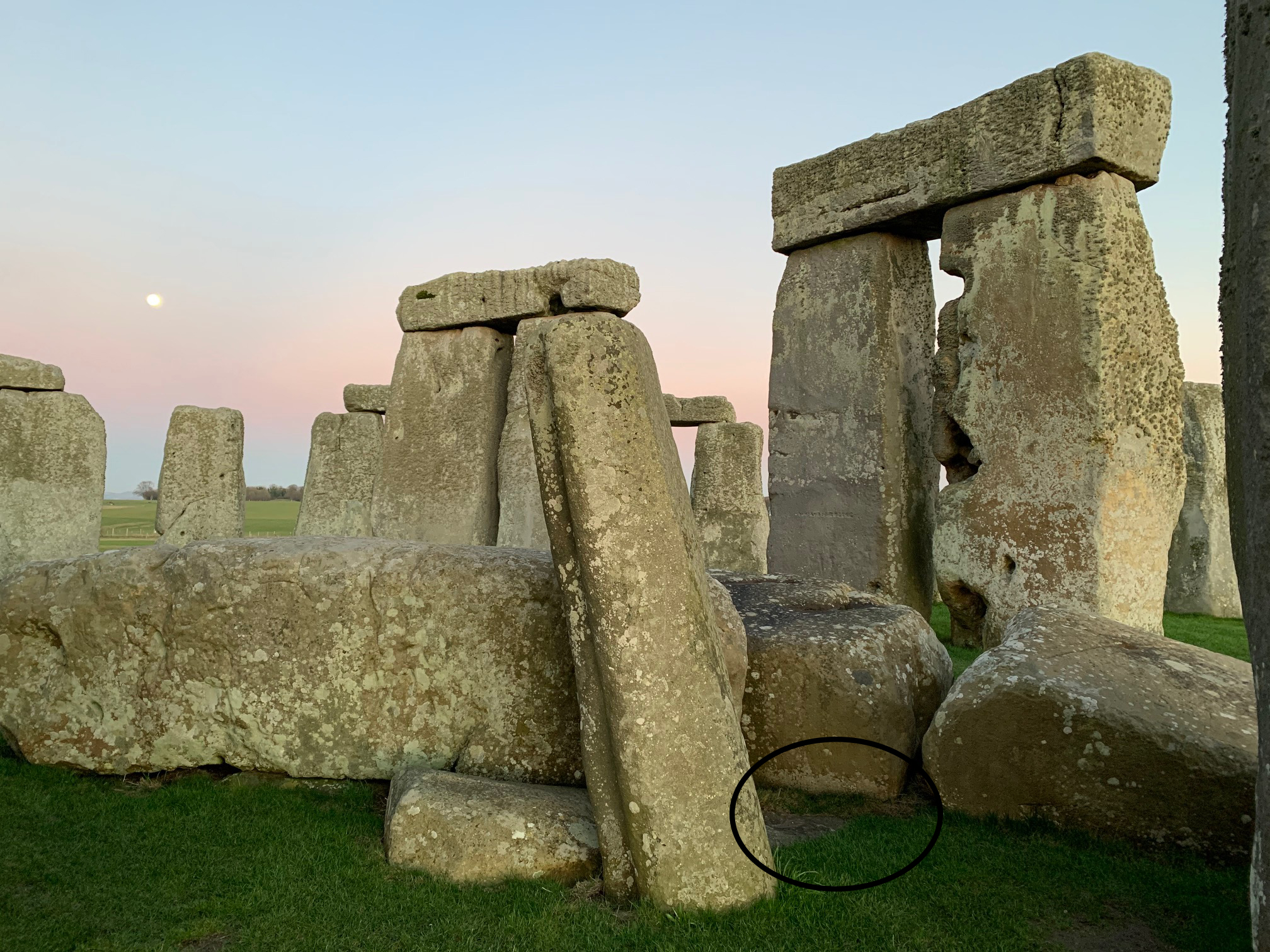The Altar Stone at Stonehenge.
New research led by Curtin University shows Stonehenge’s monumental six-tonne Altar Stone, long believed to originate from Wales, actually comes from Scotland.
Furthermore, the findings point to the existence of unexpectedly advanced transport methods and societal organisation at the time of the stone’s arrival at its current location in southern England about 5000 years ago.
Curtin researchers studied the age and chemistry of mineral grains within fragments of the Altar Stone, which is a 50cm thick sandstone block measuring 5 x 1 metres, that sits at the centre of Stonehenge’s iconic stone circle in Wiltshire.
Lead author and Curtin PhD student Anthony Clarke said analysis of the age and chemical composition of minerals within fragments of the Altar Stone matched it with rocks from northeast Scotland, while also clearly differentiating them from Welsh bedrock.


“Our analysis found specific mineral grains in the Altar Stone are mostly between 1000 to 2000 million years old, while other minerals are around 450 million years old,” Mr Clarke said.
“This provides a distinct chemical fingerprint suggesting the stone came from rocks in the Orcadian Basin, Scotland, at least 750 kilometres away from Stonehenge.
“Given its Scottish origins, the findings raise fascinating questions, considering the technological constraints of the Neolithic era, as to how such a massive stone was transported over vast distances around 2600 BC.
“This discovery also holds personal significance for me. I grew up in the Mynydd Preseli, Wales, where some of Stonehenge’s stones came from. I first visited Stonehenge when I was one year old and now at 25, I returned from Australia to help make this scientific discovery – you could say I’ve come full circle at the stone circle.”
Study co-author Professor Chris Kirkland, also from Curtin, said the findings had significant implications for understanding ancient communities, their connections, and their transportation methods.
“Our discovery of the Altar Stone’s origins highlights a significant level of societal coordination during the Neolithic period and helps paint a fascinating picture of prehistoric Britain,” Professor Kirkland said.
“Transporting such massive cargo overland from Scotland to southern England would have been extremely challenging, indicating a likely marine shipping route along the coast of Britain.
“This implies long-distance trade networks and a higher level of societal organisation than is widely understood to have existed during the Neolithic period in Britain.”


Curtin Vice-Chancellor Professor Harlene Hayne said much of the research and analysis done by Mr Clarke and Professor Kirkland was undertaken at the University’s renowned John de Laeter Centre.
“This fascinating study is another example of the stellar work being undertaken by Curtin University’s Timescales of Mineral Systems Group with the John de Laeter Centre, using state-of-the-art equipment in our GeoHistory Facility that supports important minerals research,” Professor Hayne said.
“It offers specialist mass spectrometers which are used to examine the composition of materials such as rock-forming minerals, archaeological artefacts, meteorites, ceramics and even biological substances such as teeth, bones and shell.”
Funded by an Australian Research Council Discovery Project, the research was performed in collaboration with Aberystwyth University, The University of Adelaide and University College London.
The full study titled A Scottish Provenance for the Altar Stone of Stonehenge will be published in the journal Nature.




